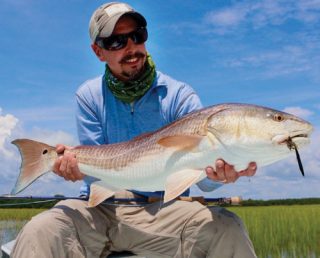Two staples in every fly angler’s box should be the Hare’s Ear Nymph and the Prince Nymph. There are many nymph patterns that are proven to produce fish but these two patterns were among the first few patterns that populated my fly box. As I continued to fish and tie my own flies, things began to become more complex and complicated on the tying bench. It seemed like there was a bakers dozen of materials needed to tie a single pattern. What I began to notice was that no matter how intricate or daunting a new pattern was to tie, it didn’t necessarily mean it would catch more fish. I began to realize that presentation of the fly was far more important than my nymphs having eyes with pupils or legs that had a femur, tibia and tarsus.
I am certain there could be situations where one might benefit from using these more complex flies, given the angler can present the fly so perfectly that the fish would only refuse the fly based on lack of detail. I most certainly belong in the previous category; needing to improve my presentation and managing my drifts before using such intricately detailed flies.
Going back to basics, analyzing the flies that were proven to work, I began to experiment. I am certain that this fly is not an original pattern, as both the Hare’s Ear and the Prince have been around a long time. Having never seen the two flies combined, but knowing they produced individually, I decided to merge the two designs.
The Hare’s Ear Prince nymph contains several of the things I look for in a good fly. Hare’s ear dubbing is very buggy, has great properties when wet and can be found in many different colors. Tying the fly in soft hackle format gives the fly a great action or undulation when moving with the current of the water. The fly also uses a peacock ice dubbing which helps give the fly a little bit of flash. The goose biot tail looks very buggy and the white goose biot wings give a nice trigger to the fly.
The Hare’s Ear Prince Nymph
Hook: Orvis Traditional Nymph Hook, Sizes 12-18
Bead: 7/64” Black Tungsten Bead (7/64” For a size 14 hook)
Thread: UNI-Thread 6/0, Camel
Tail: Stripped Goose Biot, Prince Nymph Brown
Rib: Gold Tinsel, Small
Body: Hare’s Ear Dubbing, Natural
Hackle: India Hen Cape, Variant
Wing: Stripped Goose Biot, White
Thorax: Peacock Ice Dubbing

I hope that you give this pattern a try and it brings many to the net. As always, best wishes and tight lines!
